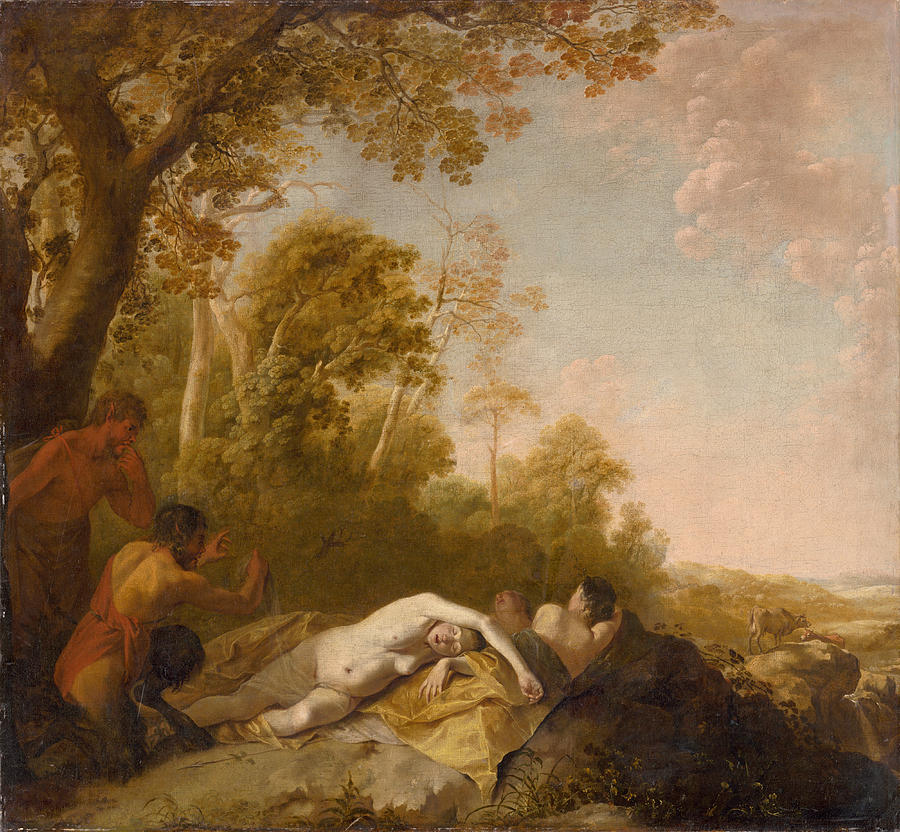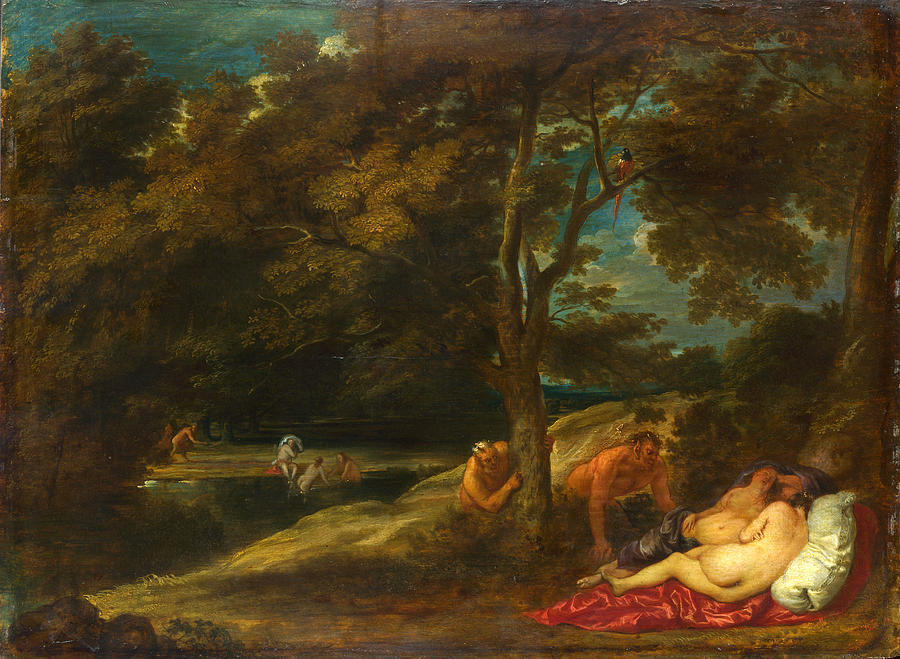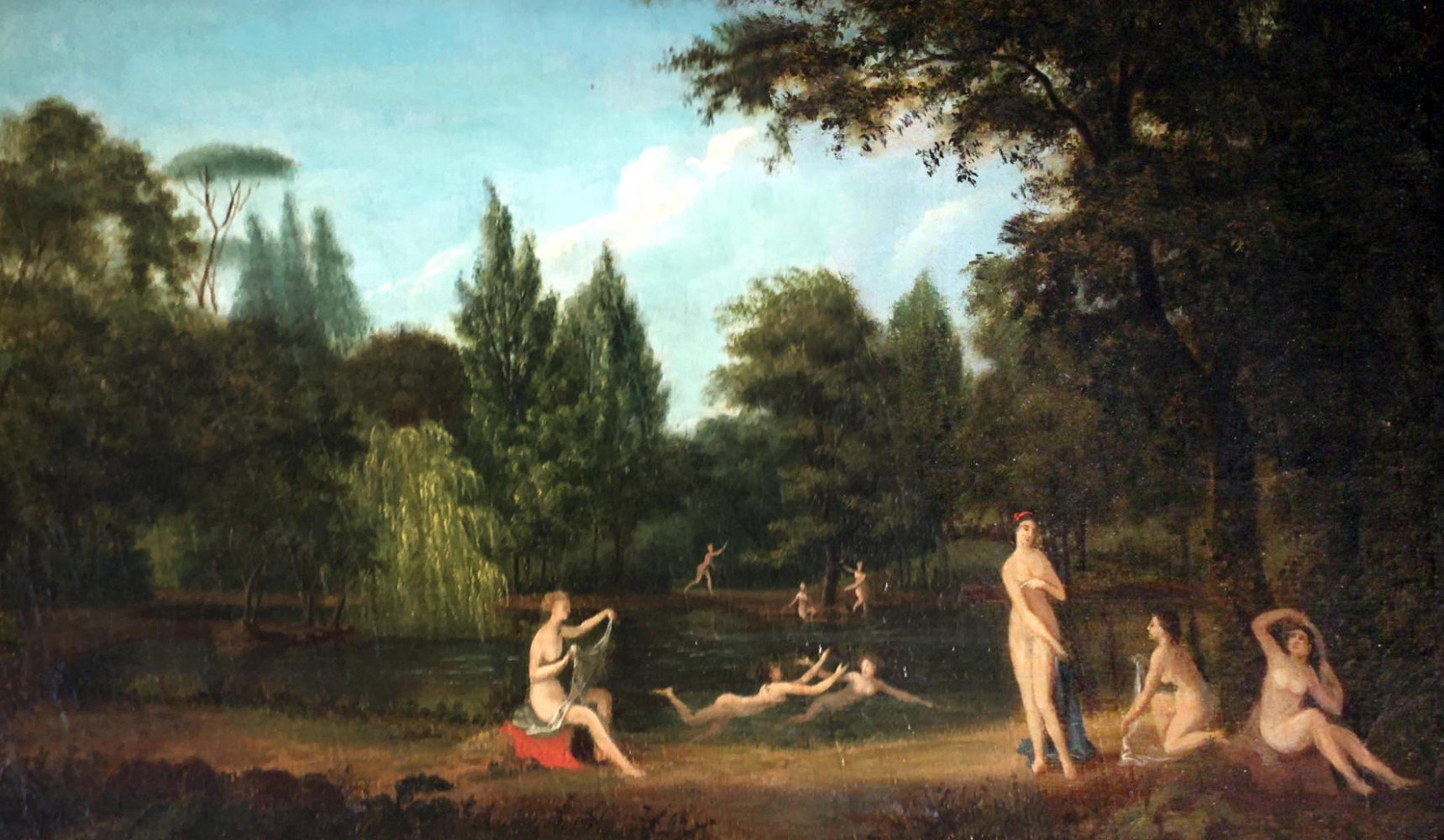
Nymphs by genuine painting Shower Curtain Zazzle
Category:17th-century paintings of nymphs From Wikimedia Commons, the free media repository Paintings of nymphs: 15th century · 16th century · 17th century · 18th century · 19th century · 20th century · Subcategories This category has the following 16 subcategories, out of 16 total. A

Nymphs Bathing, the Time is the Morning by ClaudeJoseph Date
Ca. 1615. Oil on canvas. Room 029 In this picture, the setting epitomises the classical concept of a Locus amoenus ("pleasant place)" which developed from the time of Homer and referred to an ideal place for sensual being, with flowing water that impregnates the land and shade provided by trees.

🌸Title The dance of the nymphs 🌸Artist Edouard Bisson 🌸Date unknown
To The Water Nymphs Drinking At The Fountain by English Poet Robert Herrick (1591 - 1674) | The Water Nymph by Russian Poet Alexander Pushkin (1799 - 1837) | The Water Nymphs by American Poet Ellis Parker Butler (1869 - 1937). On Water Nymphs: Celebrated poems and famous paintings from Europe, Asia and North America. #byLizPublika.
.jpg)
Edouard Bisson (French, 18561939) , The dance of the nymphs Christie's
Whilst Roman art still depicted the authentic nymphs of Greek tradition, it is more the genius loci than any nymphs as such, that permeate Roman rural folklore. However, nymphs have also endured and developed into more modern folklore and tradition, partly detached from these connotations.

Sleeping Nymphs, Curious Satyrs Painting by Dirck van der Lisse Pixels
As Hylas and the Nymphs is situated within the context of romanticism, the relationship between antiquity and romanticism is a form of neo-classicism. Although romanticism is often juxtaposed to neo-classicism, the definition of neo-classical indicates a "return to classical values and a revival of the elegant styles of Greek and Roman art".

Pin on Advanced lighting inspiration board
Hylas and the Nymphs is an 1896 oil painting by John William Waterhouse. The painting depicts a moment from the Greek and Roman legend of the tragic youth Hylas, based on accounts by Ovid and other ancient writers, in which the enraptured Hylas is abducted by Naiads (female water nymphs) while seeking drinking water.

The Wood Nymph. Art Print from Original Painting by Pat Etsy Wood
In the book illustration and the majority of Cranach's paintings, the nymph supports her head with her right hand, rests her left hand on her left thigh, and crosses her left leg over her right. The bow and quiver, which appear commonly in paintings after 1525, find a precedent in a 1510 engraving by Giovanni Maria Pomedelli.

Nymphs Surprised By Satyrs Painting by Frans Wouters
Cranach's painting of a classical nymph represents an Italian theme but gives it a moralizing twist common to late Gothic courtly and amorous subjects. The nymph reclines beside a spring, perhaps a reference to a legendary ancient Roman fountain with which a Latin verse was associated. The text was translated by Alexander Pope in 1725:

Pin on Fantastical
The mythological nymphs in art and literature, ancient and modern, fed the etymology of the condition. The fact that the (infrequently diagnosed) male equivalent of nymphomania was named 'satyrisasis' after the satyr, the nymph's traditional counterpart in the pastoral milieu, indicates the pertinence of such representations..

DragonsFaeriesElves&theUnseen The Nymphs of the Gods
The hunter Ameto, dressed in red, peers over a hill and then approaches some nymphs, attracted by the singing of Lia. In the background they hunt. The nymphs instruct Ameto in the meaning of love in a later episode of the story.. Italian Paintings: A Catalogue of the Collection of The Metropolitan Museum of Art, Florentine School. New York.

Warren B. Davis (American, 18651928). Dance of the Forest Nymphs
Paintings of the bath of Diana (6 C, 77 F) R Diana and her Nymphs Surprised by the Fauns (Rubens, Prado) (5 F) V Diana and her companions by Johannes Vermeer (11 F) Media in category "Paintings of Diana and nymphs" The following 133 files are in this category, out of 133 total.

Pin on Scrapbook
Subject Matter: Visual Description The Nymphs and Satyr painting depicts a group of five mythological figures in the center of the foreground and towards the middle ground of the composition.

Nymphs Artwork By Hans Zatzka Oil Painting & Art Prints On Canvas For
Media in category "Paintings of Nymphs and Satyrs" The following 10 files are in this category, out of 10 total. Jacob Jordaens - Nymphs and Satyrs, an allegory of fire.jpg 1,688 × 1,500; 3.29 MB. Andrea Locatelli (1695-1741) - Nymphs and Satyrs Celebrating Flora and Priapus with Flowers - 771207 - National Trust.jpg 1,200 × 707; 138 KB.

Woodland nymphs by a stream Painting by Hans Zatzka Pixels
Diana, the Roman goddess of the hunt, wears a crescent on her forehead, also identifying her as the moon goddess. Diana lived apart from men, accompanied by a group of nymphs; she often represented unattainable beauty or chastity. With a nymph at left fending off a lustful satyr, Rubens refers to a struggle between vice and virtue, combining a.

Nymphs Bathing at a Pool c. 1800 Collection WOLFS Fine Paintings
A nymph (Ancient Greek: νύμφη, romanized: nýmphē, Modern Greek: nímfi; Attic Greek: [nýmpʰɛː], Modern Greek:), sometimes spelled nymphe, in ancient Greek folklore is a minor female nature deity.Different from other Greek goddesses, nymphs are generally regarded as personifications of nature, are typically tied to a specific place or landform, and are usually depicted as maidens.

Nymphs Portfolio SchipHill Art Studio
Nymph and Fauns, Julius Kronberg's breakthrough work, was one of the most popular paintings in Sweden in the 1870s. Kronberg had studied in Düsseldorf and Munich and particularly admired the art of Austrian historical painter Hans Makart.Makart's love of using colour and sumptuous props to bold effect is clearly reflected in Kronberg's depiction of the hunting nymph secretly being.